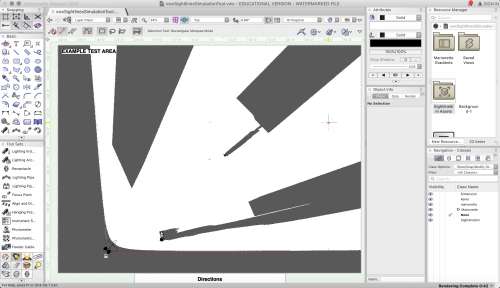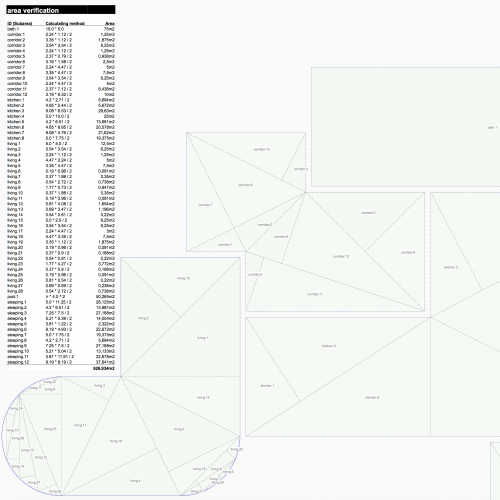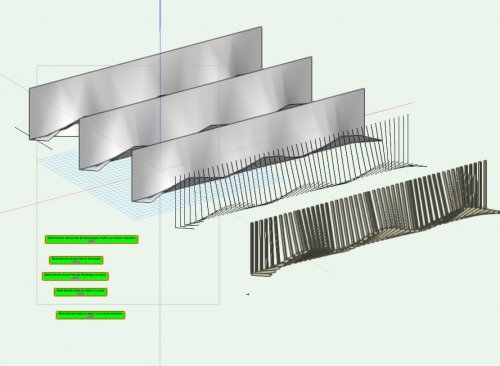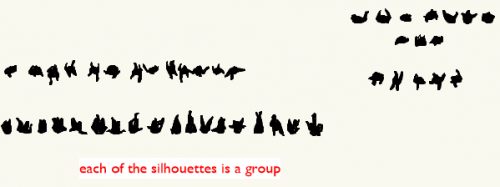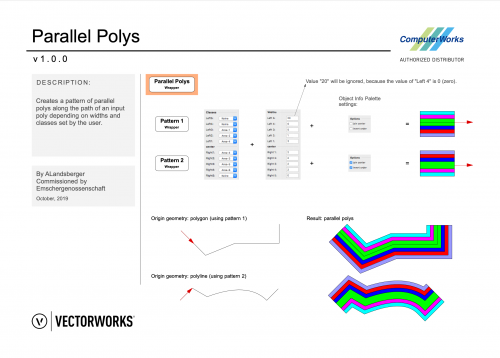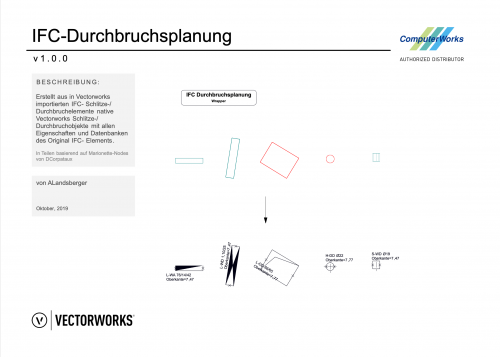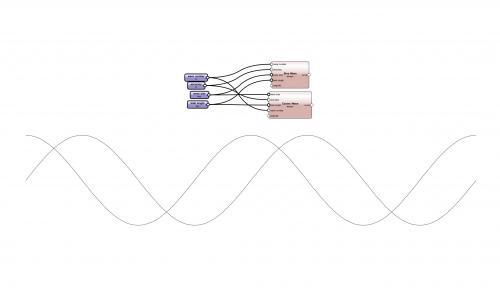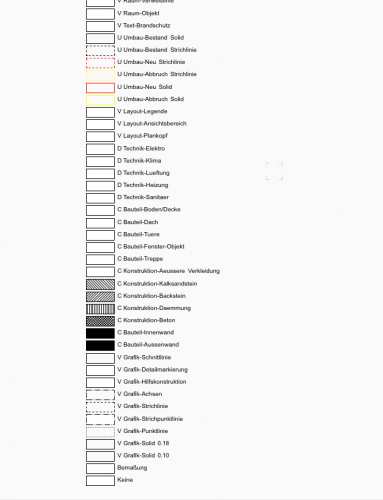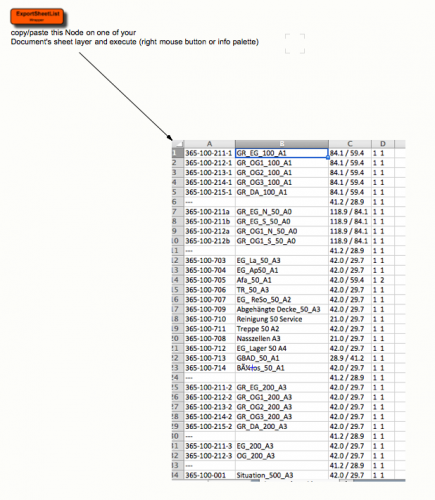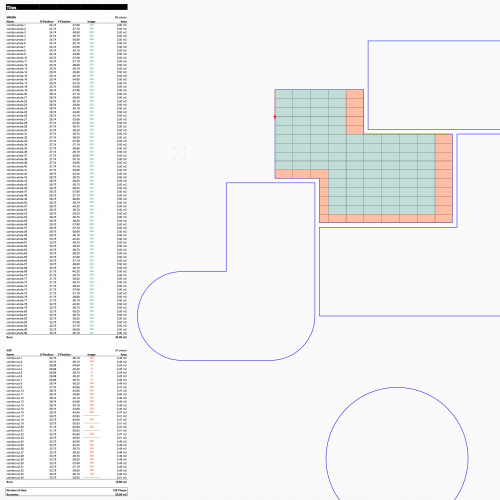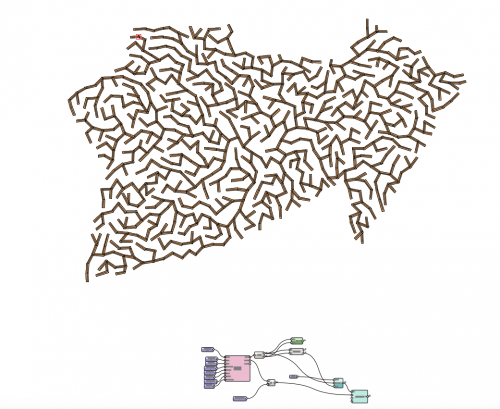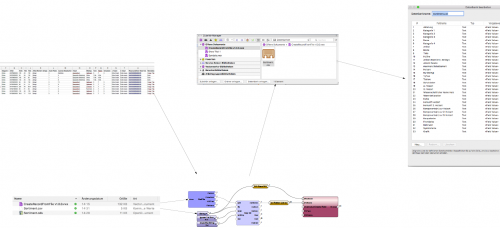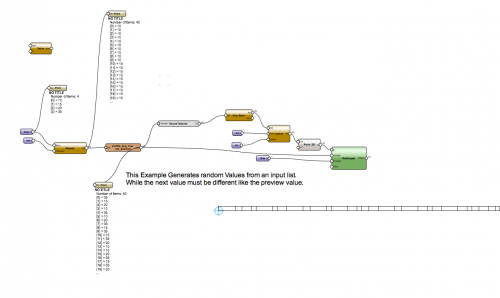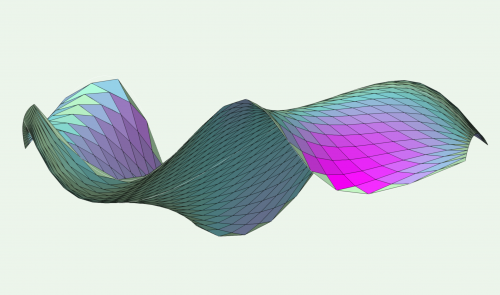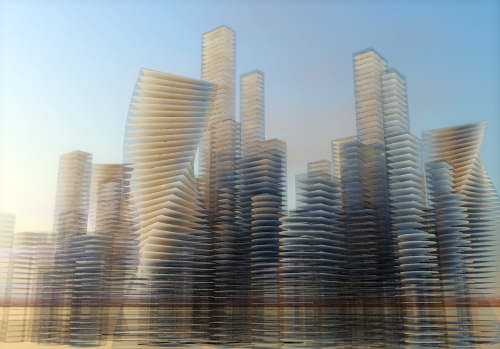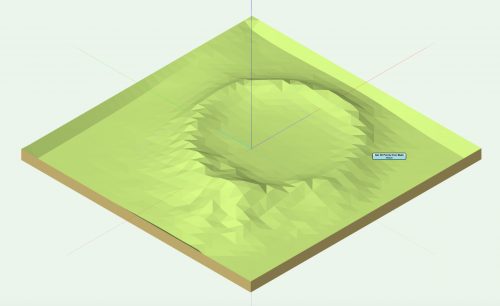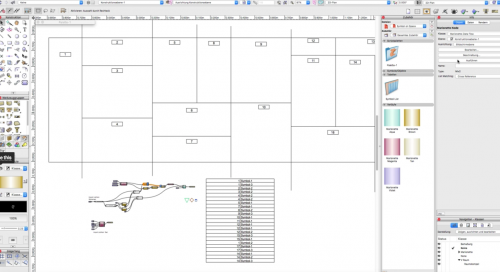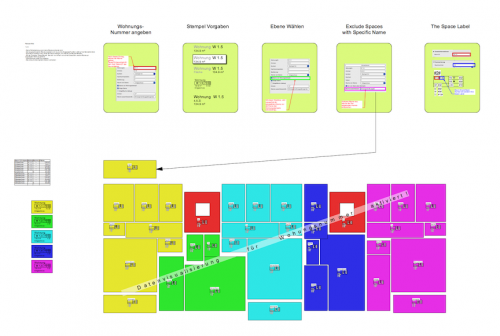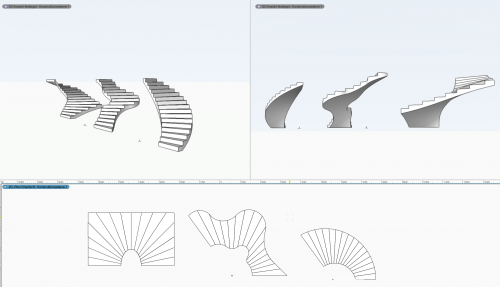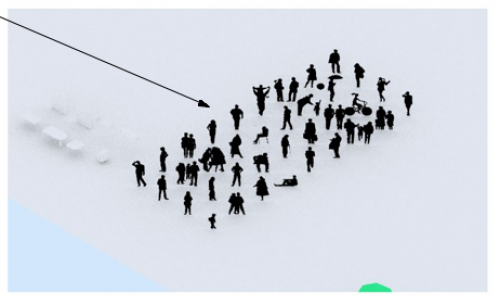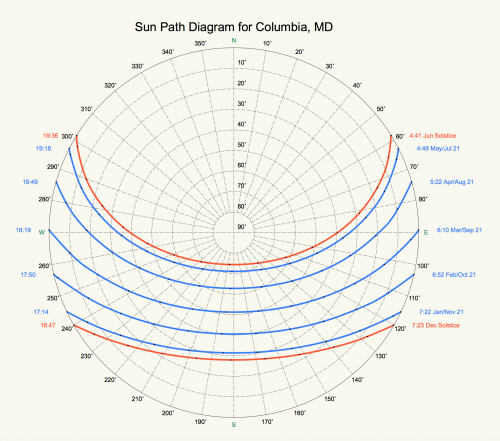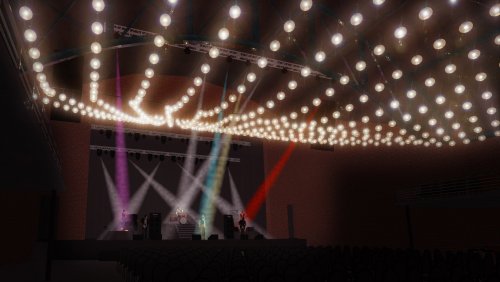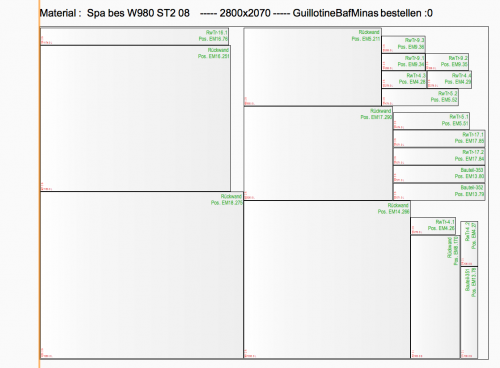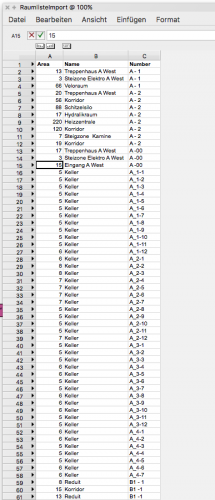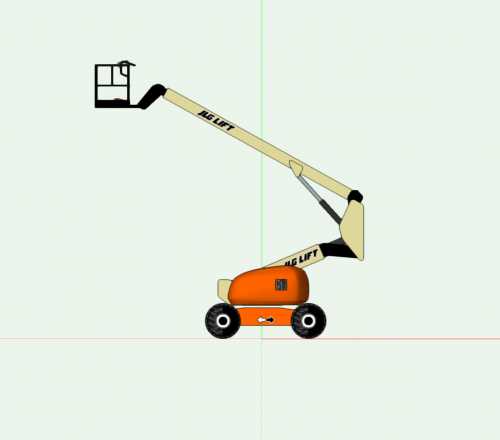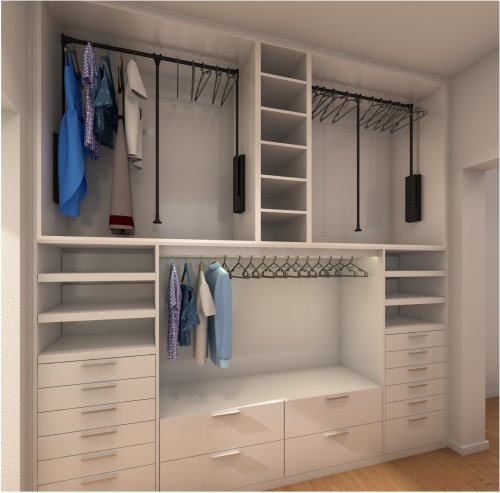Marionette - Networks
70 files
-
Sightlines Simulation Using Shadow Projection
This is a scenic design tool I created for set designers to help simulate sightlines quickly for those situations where scenery is moving around a lot during a show and you're trying to check for blind spots in arrangements, communicate with the director, or are designing something complicated in the round. While this program requires a 3D model to work it will only give you a 2D groundplan simulation. Because I'm modeling the blind spots using a lighting device to create the shadow projection there will be some slight error and the tool will be less effective on a multi-level set or significantly raked stage.
Directions for use are given in the file along with a series of buttons to run the program. In essence, you run a network to generate a sight line object and name it (e.g. House Right Seat), move the object to the location and adjust the sight line bounds, and then run another network to create a shadow projection simulation of what a person can see from that seat. Finally, you switch to fast renderworks to see the shadows and, if necessary, adjust the Bot-Z depending on where the z=0 point is in relation to the playing space.
I'm using a object naming system that takes user input and names objects with concatenation as they're are created, releases them to the user for manual modification, and then regains control in a separate network. This is still a little buggy and sometimes leads to VWX crashing (particularly the user clicks "cancel" after prompted to input a name), so save your file before running any of the networks here.
I'm still new to marionette so I appreciate any feedback.
37 downloads
- marionette
- set design
- (and 1 more)
(0 reviews)0 comments
Updated
-
Area Verification
This tool was
commissioned by ComputerWorks GmbH
edited by: Markus Graf and Pascal Völz
supervised by: Antonio Landsberger
Compatibility: Vectorworks 2019 and higher.
Area Verification is a Marionette tool used to graphicallly and tabularly verify the surface area of spaces/rooms (circle, rectangle, poly line & polygon) in the class "Rooms". To do that the Marionette network divides the areas into calculatable subareas: circles, rectangles, triangles.
The graphical area verification using subareas is often required when applying for permits (building construction, landscaping).
For easier usage a wrapper node is provided.
How to use:
a) Place the geometries (spaces/rooms) in the class "Rooms".
b) Run the wrapper node.
c) Update table.
To do:
- update table when running script
- implement an add-on to turn spaces into polygons (soon)
114 downloads
- surface area
- verification
- (and 2 more)
-
Extrude Rails by rectangle / custom profile by name
Multiple experiments of profiles created from a nurbs surface in order to create multiple rails with dozens or hundreds of nurbs profiles simultaneously. This Marionnette is based off of Freeform truss objects, so all credit goes to @Marissa Farrell. Thank you!
70 downloads
- extrude along path
- rails
- (and 1 more)
-
Automatically convert groups (or other objects) into symbol
By Nico_be
Imagine: You have just received a file containing a large number of objects that need to be transformed into symbols. This typically happens when I buy a file containing objects that are not symbols after import.
This tool transforms the objects that meet the chosen criteria into symbols in OIP and places them in a new folder whose name you specify.
In OIP Choose : The symbol préfix; the name for the symbol folder and the criteria configuration.
Very handy!
Automatically convert groups V2019.vwx
57 downloads
-
Create Stories
Creating stories, levels, and layers can be a tedious process, especially for tall, multistory projects. This wrapper allows you to automate that process based on an overall building height, typical floor heights, and default levels. You can create up to 4 Layer Levels and 2 Layerless Levels. To create fewer Levels, leave any of the Layer 1, Layer 2, Layer 3, Layer 4, Layerless Level 5, and/or Layerless Level 6 fields blank.
To use this script in a new file, simply import the wrapper into the file, place it in the drawing, and run the script. The settings of the script are very similar to the levels and layers created in the Vectorworks template, but you can customize them in the OIP of the wrapper. To change the Story suffixes and Story names, double click on the wrapper and the select the Get Story Names node. There are settings that you can change in the OIP of this node as well.
NOTE: Existing stories and story-associated layers that match the names of the new stories and layers will be deleted every time you run this script. Existing stories that DO NOT match the names of the new stories will not be deleted but may interfere with the creation of new stories. It is recommended that this script is run in a file without existing stories, levels, or story-associated layers.
143 downloads
-
Parallel Polys
Creates a pattern of parallel polys along the path of an input poly depending on widths and classes set by the user.
Erzeugt ein Muster paralleler Polys entlang eines Polys in Abhängigkeit der vom Nutzer festgelegten Breiten und Klassen.
By ComputerWorks GmbH.
Compatibility: Vectorworks 2020 and higher.
84 downloads
-
Extrude & Array
By AlanW
Hi just a file that may assist in the learning of Marionette.
I have a lot of files that i feel should be out there that may assist. Hope this is the right location to place them.
Alan
124 downloads
-
(0 reviews)
0 comments
Submitted
-
IFC-Durchbruchsplanung
Erstellt aus in Vectorworks importierten IFC- Schlitze-/Durchbruchelemente native Vectorworks Schlitze-/Durchbruchobjekte mit allen Eigenschaften und Datenbanken des originalen IFC-Elements.
Informationen zur Anwendung entnehmen Sie bitte der Anleitung, die parallel zu dieser Datei als Download zur Verfügung steht.
Von: ComputerWorks GmbH. In Teilen basierend auf Marionette-Nodes von DCorpataux.
Kompatibilität: Vectorworks 2020.
295 downloads
- ifc
- durchbruchsplanung
- (and 3 more)
(0 reviews)0 comments
Updated
-
Sine Wave
Here are a couple wrappers that output sine and cosine waves. I thought the math enthusiasts might find these useful.
63 downloads
-
Class Legend Attributes
By DomC
This Network ist not very flexible (world based values, just one row) but still useful.
You can insert and and ungroup for individual layout etc.
Note!
1. First delete all classes and replace to "none" or "keine"
2. copy the object on your file
3. If you do not delete classes on the original, you will paste the classes from the example in your file
101 downloads
-
Test Proximity and Associate Existing Trees
This file is most useful for Landmark users but could be adapted to other plugin objects (PIOs). The purpose of these scripts are to take surveys of existing trees that consist of "dumb" data - pieces of geometry and text to label trees on a survey - and convert it into Existing Trees with the relevant text data associated.
The first network, "Test Proximity," runs a check to make sure that each piece of text is closest to its associated piece of geometry. This is necessary to make sure that the second script will work properly.
The second network takes the center of each piece of geometry and places an Existing Tree there. It will use the saved red symbol in the Resource Manager as a template, so if you use particular default settings for your Existing Trees, you can edit the red symbol. (Some day maybe there will be an Existing Tree Style!) The network will also transfer the text data to your chosen field of the Existing Tree PIO. In this network, it is set to transfer to the Tree No data field.
This network could be adapted to other PIOs if needed.
131 downloads
- landmark
- existing tree pio
- (and 1 more)
(1 review)0 comments
Submitted
-
Export SheetLayers as txt (Text-Tab)
By DomC
This Scripts help you exporting your layout structure to get an external list of your drawings if needed.
Exports Sheet Name, Title, Page Size and Page Numbers. Export Folder can be selected. FileName.txt can be set in ObjectInfo of wrapper. Grey and orange nodes (Screenshot) are custom nodes. "Manipulate File" is edited (codex utf_8) to support special characters like äöüé etc.
Note: I think Excel on Mac has issues handle the exported file's special characters (utf_8 encoding), not my fault I guess. The codex can be changed inside "Manipulate File" Node if you are not happy with the exported text encoding or find/replace on the other Software.
66 downloads
(0 reviews)0 comments
Updated
-
Tiles
This tool was
commissioned by ComputerWorks GmbH
edited by: Markus Graf and Pascal Völz
supervised by: Antonio Landsberger
Compatibility: Vectorworks 2019 and higher.
Tiles is a Marionette tool for bond pattern planning using geometric shapes (circle, poly line, polygon, rectangle) to show distribution of whole and cut tiles.
For easier usage a wrapper node is provided.
How to use:
a) Place the geometries (rooms) in the class "Rooms".
b) Place the arrow (in class "Direction") inside the room you want to get the tile pattern for.
c) Change the values according to your liking.
d) Run the wrapper node.
e) Update table.
To do:
- update table when running script
- implement an add-on to turn spaces into polygons (soon)
- implement more than one bond pattern
86 downloads
(0 reviews)0 comments
Updated
-
Growing Lines
By DomC
This example is based on a custom node. which returns a line pattern. This pattern is based on several while and random loops. I have not found a proper way to run a while loop over a marionette network so this is better to create in a custom node.
It is easier to play with the example, than explaining exactly how it works.
Have fun with it. This is my base study to find a workflow to project any pattern on a NURBS Surface which would be a real scope of usage.
Movie Link (first Part of Movie)
https://youtu.be/GcFwW-k5Lms?list=PL8s_WkTvFQ2YdFlMfU7Teuh5QrmsO03gW
Growing Lines 1.0.0.mp4
102 downloads
(0 reviews)0 comments
Updated
-
Bar Diagram
By DomC
A nice, small Marionette for creating bar diagrams. This is much more simpler and more flexible than a spread sheet bar diagram.
Options:
1. ColNames
2. Col Values -> mandatory
3. RefValue -> A bar with this value, has the height of the BArHeigtRefValue field
4. BarWidth
5. BarHeigtRefValue
6. Invert -> A bigvalues results in small bar
There is a 2 minute movie (without audio)
Bar Diagram.mp450 downloads
(0 reviews)0 comments
Submitted
-
Create Record from external File
By DomC
This example shows, how to create a record format with fields from an external csv or text-tab file with marionette.
This example maybe needs the following know how which is not automatically is handled by the script:
1. Save Text with excel, open office or any other application as separated text file or tab separated text file.
2. Setup the "import txt" node-popup with the needed text encoding. Try utf-8, Latin1, macLatin_2 or other encoding to handle umlauts or special character issues.
3. The Exmaple just checks the first line of the text-file and creates record fields from them
4. The path to the text-input in the attached example is related to the document path. Save first your Vectorworks document. Or use an absolute path input.
5. No warranty or charge for this script, play first on a new file or on the attached file.
I whish you success with it
109 downloads
(0 reviews)0 comments
Updated
-
(0 reviews)
0 comments
Submitted
-
Shuffle Numbers Example
By DomC
An Input of 4 different numbers. Out of that 4 values there are 40 shuffled numbers of the same values. Next value never is the same like preview value.
This Example uses a custom "shuffle-node" (randomize input list with the option, no next value must be the same like preview value) and the "saldo-node" (returns a sum after every new value).
24 downloads
(0 reviews)0 comments
Updated
-
Panelization
This file was created by Proving Ground to analyze the panelization of NURBS surfaces. Based on 3 NURBS curves, it creates a lofted surface, then converts it to a series of 3D polys. It then compares the 3D polys to the curvature of the surface at that point and states how out of plane each panel is. It also uses a color gradient to indicate where it is out of plane. It then makes a copy of the panels and lays them flat in a grid.
161 downloads
(0 reviews)0 comments
Submitted
-
Create Multiple Shells
By Luis M Ruiz
This set of wrappers are good for creating multiple shells from a solid object.
Steps: Name you solid object > set the desire thickness > spacing > run the script.
131 downloads
(0 reviews)0 comments
Submitted
-
ImgProcessing-03
By AlanW
Following on from Marissa's network I made a few adjustments to provide optimise the process to get reasonable results relatively quickly.
56 downloads
(0 reviews)0 comments
Submitted
-
Create Site Model from Mesh
This is a Marionette network that converts a mesh to 3D locus points. This is very useful for converting meshes of terrains imported into SketchUp from Google Earth into Vectorworks Site Models. Once you have a SketchUp mesh, import it into Vectorworks and give the mesh a name. Take the wrapper in this file and place it in the same drawing. Change the name of the mesh in the OIP of the wrapper to the name you gave the SketchUp mesh. Raising the number of the grid density will make your site model more accurate, but it might take the wrapper up to a minute or two run. When you run the script, you will get a group of 3D loci. Ungroup the loci, and keeping them selected, go to AEC -> Terrain -> Create Site Model... (in the Architect Workspace). Choose your settings and click ok
366 downloads
(2 reviews)0 comments
Submitted
-
Fill Spaces With Symbols
By DomC
Imagine you have client, which delivers you a room list. And a list, which objects have to be in this rooms. You can consider this lists with hundreds of rooms on your left screen and click them one by one in your rooms. You will make errors and your eyes will get squared.
Another real interesting example how you could accelerate a routine job with a marionette script.
92 downloads
(0 reviews)0 comments
Updated
-
Galloping Horse
By AlanW
Just a bit of fun with one of Marissa's wonderful nodes. Just run the network.
27 downloads
(0 reviews)0 comments
Submitted


